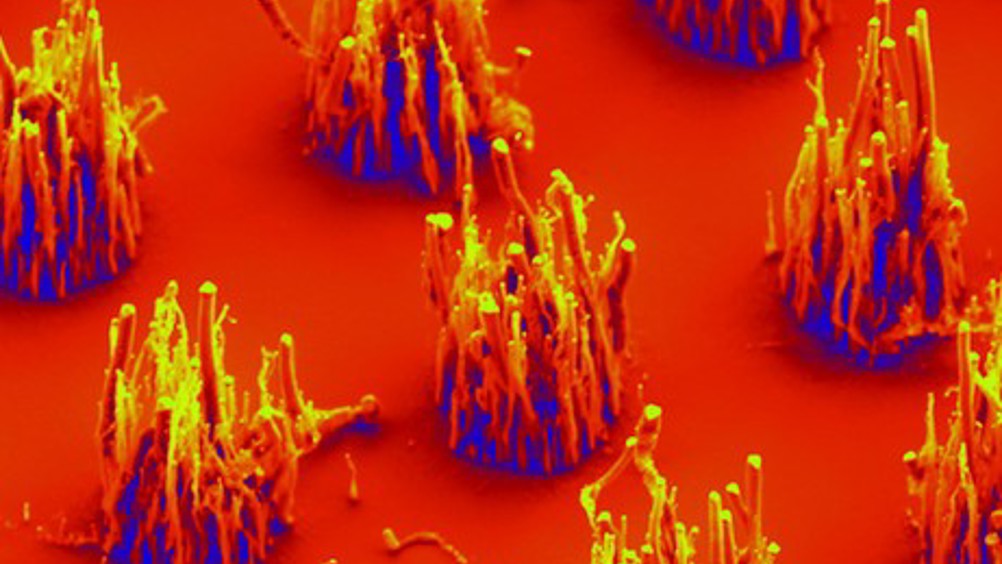Ambient air manufacture for vertical carbon nanofibres
Researchers from North Carolina State University have demonstrated that vertically aligned carbon nanofibres (VACNFs) can be manufactured using ambient air, making the manufacturing process safer and less expensive.

VACNFs hold promise for use in gene-delivery tools, sensors, batteries and other technologies.
Conventional techniques for creating VACNFs rely on the use of ammonia gas, which is toxic.
‘This discovery makes VACNF manufacture safer and cheaper, because you don’t need to account for the risks and costs associated with ammonia gas,’ said Dr Anatoli Melechko, an adjunct associate professor of materials science and engineering at NC State and senior author of a paper on the work. ‘This also raises the possibility of growing VACNFs on a much larger scale.’
In the most common method for VACNF manufacture, a substrate coated with nickel nanoparticles is placed in a vacuum chamber and heated to 700 degrees Celsius.
The chamber is then filled with ammonia gas and either acetylene or acetone gas, which contain carbon.
When a voltage is applied to the substrate and a corresponding anode in the chamber, the gas is ionized. This creates plasma that directs the nanofibre growth.
Register now to continue reading
Thanks for visiting The Engineer. You’ve now reached your monthly limit of news stories. Register for free to unlock unlimited access to all of our news coverage, as well as premium content including opinion, in-depth features and special reports.
Benefits of registering
-
In-depth insights and coverage of key emerging trends
-
Unrestricted access to special reports throughout the year
-
Daily technology news delivered straight to your inbox










Water Sector Talent Exodus Could Cripple The Sector
Well let´s do a little experiment. My last (10.4.25) half-yearly water/waste water bill from Severn Trent was £98.29. How much does not-for-profit Dŵr...